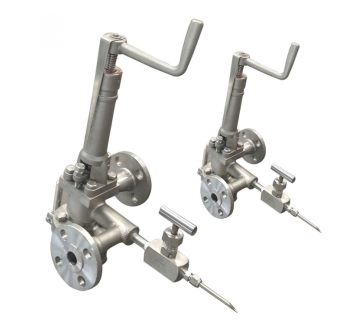The hand-operated on-line liquid sampling system mainly consists of the following components:
Emergency valve: Used for safety control in emergency situations.
Drive screw: The sample is extracted by rotation.Sampling Systems
Valve body: the body part that holds and transfers the sample.
Screw support: support the drive screw to maintain its stable operation.
Handle: User operated part, through the hand to achieve sample collection.
Plunger: Moves up and down in the body to extract or discharge the sample.
Outlet pipe: The collected sample is transported to the collection container.
Sealed components: Ensure no leakage during sampling, protecting operators and the environment.
Coupling flange: Used to connect the sampler to other equipment or pipes.
Sulfur on-line sampler is widely used in the storage, transportation and processing of sulfur in petrochemical industry, coal chemical industry, fertilizer production and other fields. Through real-time and accurate collection of sulfur liquid samples, reliable data support is provided for product quality control and process optimization.
Hand sulfur sampler: By manually rotating the handle, drive the internal mechanism of the sampler for sampling. This kind of sampler has simple structure and convenient operation, and is suitable for small and medium-sized production lines or laboratories.
structure chart:

A sampling system usually refers to a system that can intermittently (or discretely) sample a continuous signal and convert it into a discrete signal (such as a pulse train or a digital sequence) for subsequent processing or storage.Custom sampling system At the heart of this process is the sampling technique, which obtains a series of discrete signal values by measuring a continuous signal at a specific point in time (sampling point).
A sampling system usually refers to a system that can intermittently (or discretely) sample a continuous signal and convert it into a discrete signal (such as a pulse train or a digital sequence) for subsequent processing or storage.Custom sampling system At the heart of this process is the sampling technique, which obtains a series of discrete signal values by measuring a continuous signal at a specific point in time (sampling point).
A sampling system usually refers to a system that can intermittently (or discretely) sample a continuous signal and convert it into a discrete signal (such as a pulse train or a digital sequence) for subsequent processing or storage.Custom sampling system At the heart of this process is the sampling technique, which obtains a series of discrete signal values by measuring a continuous signal at a specific point in time (sampling point).


